Ditapis dengan
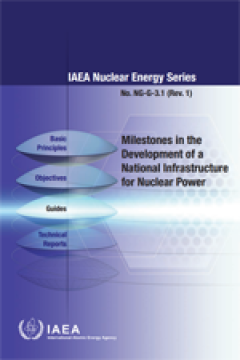
Milestones in the Development of a National Infrastructure for Nuclear Power …
The development and implementation of an appropriate infrastructure to support the successful introduction of nuclear power and its safe, secure, peaceful and sustainable application is an issue of central concern, especially for countries that are considering and planning their first nuclear power plant. In preparing the necessary nuclear infrastructure, there are several activities that need …
- Edisi
- -
- ISBN/ISSN
- 978-92-0-104715-1
- Deskripsi Fisik
- 70 Pages
- Judul Seri
- -
- No. Panggil
- 384.551 IAE M
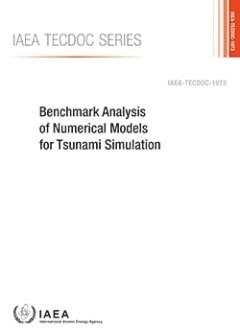
Benchmark Analysis of Numerical Models for Tsunami Simulation: IAEA TECDOC No…
The 2004 Indian Ocean tsunami damaged the Madras Atomic Power Station in India and led to a new understanding of the importance of flooding hazards caused by tsunamis at nuclear power plant sites. The Great East Japan Earthquake and subsequent tsunami in 2011, which heavily damaged the Fukushima Daiichi nuclear power plant, re-emphasized the importance of tsunami hazard assessments. Recognizing…
- Edisi
- -
- ISBN/ISSN
- 978-92-0-128321-4
- Deskripsi Fisik
- 146 p
- Judul Seri
- IAEA TECDOC series
- No. Panggil
- 551.4637 IAE b
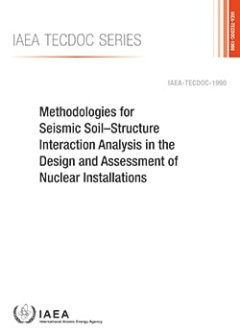
Methodologies for Seismic Soil–Structure Interaction Analysis in the Design…
The response of a nuclear installation’s structure during an earthquake depends on the characteristics of the ground motion, the surrounding soil and the structure itself. Soil– structure interaction (SSI) analysis is used to evaluate the effects of seismic ground motion on an installation’s structure, system and components, to ensure it is designed to withstand the effects of earthquakes…
- Edisi
- -
- ISBN/ISSN
- 978-92-0-143121-9
- Deskripsi Fisik
- 194 p
- Judul Seri
- IAEA TECDOC
- No. Panggil
- 621.039.58 IAE m
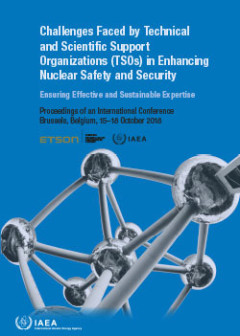
Challenges Faced by Technical and Scientific Support Organizations (TSOs) in …
The global nuclear safety and security framework (GNSSF) provides a conceptual structure and guidelines for achieving and maintaining a high level of safety and security at nuclear facilities and in nuclear related activities around the world. Technical and scientific support organizations (TSOs) play an essential role in sustaining the GNSSF by providing assistance to regulatory bodies in esta…
- Edisi
- -
- ISBN/ISSN
- 978-92-0-121021-0
- Deskripsi Fisik
- 258 p
- Judul Seri
- Proceedings Series - International Atomic Energy Agency
- No. Panggil
- 621.039.58 IAE c
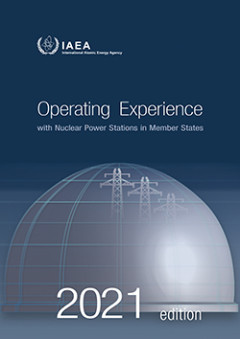
Operating Experience with Nuclear Power Station in Member States; IAEA/OPEX/2021
This report contains the 52nd edition of the IAEA’s series of annual reports on operating experience with nuclear power plants in Member States. It is a direct output from the IAEA’s Power Reactor Information System (PRIS) and contains information on electricity production and overall performance of individual plants during 2020. In addition to annual information, the report contains a hist…
- Edisi
- 2021
- ISBN/ISSN
- 1011-2634
- Deskripsi Fisik
- 1619p.: illus.; 26cm.
- Judul Seri
- IAEA/OPEX/2021.
- No. Panggil
- 621.48 IAE O
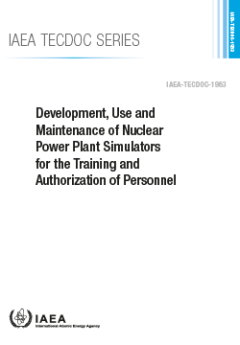
Development, Use and Maintenance of Nuclear Power Plant Simulators for the Tr…
The use of simulators for the training and qualification of nuclear power plant (NPP) control room operating personnel has become a standard practice throughout the world to develop and reinforce knowledge of plant systems and their relationships. It is an approach to increase the ability to apply plant procedures, to advance practical skills in operating the plant in normal, abnormal and emerg…
- Edisi
- 2021
- ISBN/ISSN
- 978-92-0-121121-7
- Deskripsi Fisik
- 182 p
- Judul Seri
- -
- No. Panggil
- 621.312 IAE d
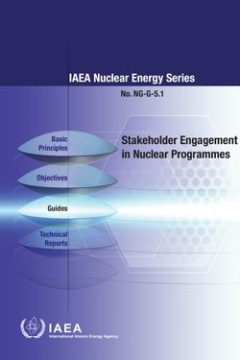
Stakeholder Engagement in Nuclear Programmesl : IAEA Nuclear Energy Series NG…
As societies evolve and citizens have increasingly easy access to more information, stakeholder engagement has become recognized as a growing area of strategic value for the development of nuclear programmes. Nuclear science and technology often face unique challenges with regard to public understanding and acceptance. It is generally recognized that nuclear technologies contribute significantl…
- Edisi
- 2021
- ISBN/ISSN
- 978–92–0–133421–3
- Deskripsi Fisik
- 78 p
- Judul Seri
- IAEA Nuclear Energy Series NG-G-5.1
- No. Panggil
- 621.039:005.331 IAE s

Risk Aggregation for Nuclear Installations | IAEA TECDOC No. 1983
This publication describes the practices and challenges related to risk aggregation for various hazards, various operational states, and considering all sources of potential radioactive releases at a nuclear installation site. It provides a methodology and technical basis for risk aggregation and describes the good practices and practical examples of risk aggregation developed by IAEA Member St…
- Edisi
- -
- ISBN/ISSN
- 978-92-0-135421-1
- Deskripsi Fisik
- 143 P
- Judul Seri
- -
- No. Panggil
- 621.48 IAE R
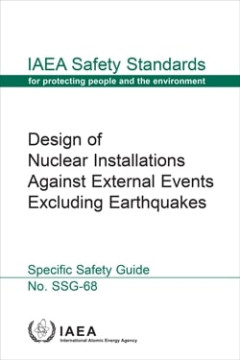
Design of Nuclear Installations Against External Events Excluding Earthquakes…
The status of the IAEA safety standards derives from the IAEA’s Statute, which authorizes the IAEA to establish or adopt, in consultation and, where appropriate, in collaboration with the competent organs of the United Nations and with the specialized agencies concerned, standards of safety for protection of health and minimization of danger to life and property, and to provide for their appl…
- Edisi
- IAEA Safety Standards Series.
- ISBN/ISSN
- 978-92-0-136121-9
- Deskripsi Fisik
- 112 p
- Judul Seri
- IAEA Safety Standards Series.
- No. Panggil
- 621.039.58 IAE d
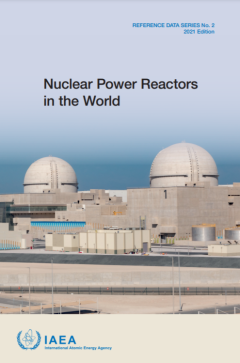
Nuclear Power Reactors in the World 2021 Edition Reference Data Series No. 2
This is the 41st edition of Reference Data Series No. 2, which presents the most recent reactor data available to the IAEA. It contains summarized information as of the end of 2020 on power reactors operating, under construction and shut down as well as performance data on reactors operating in the IAEA Member States. The information is collected through designated national correspondents in th…
- Edisi
- 2021
- ISBN/ISSN
- 978-92-0-124421-5
- Deskripsi Fisik
- 94 p
- Judul Seri
- -
- No. Panggil
- 539.7 IAE n
 Karya Umum
Karya Umum  Filsafat
Filsafat  Agama
Agama  Ilmu-ilmu Sosial
Ilmu-ilmu Sosial  Bahasa
Bahasa  Ilmu-ilmu Murni
Ilmu-ilmu Murni  Ilmu-ilmu Terapan
Ilmu-ilmu Terapan  Kesenian, Hiburan, dan Olahraga
Kesenian, Hiburan, dan Olahraga  Kesusastraan
Kesusastraan  Geografi dan Sejarah
Geografi dan Sejarah